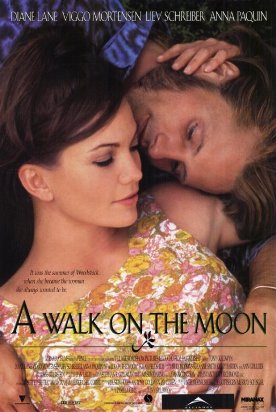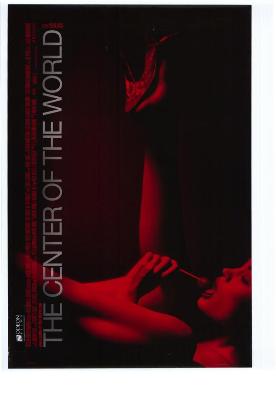Walk on the Moon, A
I think I shall have to develop a shorthand designation for pictures like A Walk on the Moon, directed by Tony Goldwyn. We may call them tales of the Spiritual Adulterer. These started coming out in the mid- to late-1960s and have continued in uninterrupted spate since then. Their purpose is to sell us on the notion of adulterous sex as a form of personal fulfilment, often of a quasi-feminist kind — presumably because it is an obvious and dramatic way of representing marriage as female enslavement, just as the stupider kind of feminists do. They imagine the alternative to monogamous marriage as an equal freedom of men and women to form and break temporary alliances, even though historically the alternative has always been polygamous marriage, in comparison with which marriage as we know it represents female empowerment. Moreover, as the institution of marriage has been undermined in the last thirty years, we have seen the beginnings of a return to de facto polygamy.
What is most amusing about the cinematic Spiritual Adulterer is that he never seems to go to the movies himself. It always comes to him, or more often her, as a bolt from the blue, this sudden realization that the answer to all problems lies in having an affair. What an amazing discovery! Surely no one’s ever thought of that before. The enchantment of first betrayal is to our hip, post-60s cinema what the enchantment of first love was before that time. The sexual revolution, inspired by a popularized Freudianism which regards all inhibitions (even those which prevent us from making fools of ourselves) as bad and destructive, never ended in Hollywood. That is one reason why so many of the movies featuring the Spiritual Adulterer, including A Walk on the Moon, are set in the 1960s.
The S.A. in this case is Pearl Katrowitz (Diane Lane), wife of Marty (Liev Schreiber), mother of 14 year old Alison (Anna Paquin) and young Danny (Bobbie Perrino) and daughter-in-law of Lillian (Tovah Feldshuh). All of the above go to a Jewish holiday camp in the Catskills in the summer of 1969, though Marty must go back into the city during the week to work at his job as a TV repairman. During his absences, Pearl, feeling “trapped” by her life, is attracted by and quickly succumbs to an itinerant hippie peddler known as “The Blouse Man” from his wares but whose real name is Walker Jerome (Viggo Mortensen). Meanwhile, rebellious Allison is discovering her own sexuality with the boys at the camp, Lillian is trying to hang on to traditional values and Woodstock and Neil Armstrong’s moonwalk are working overtime to present us with symbolic analogues of the various kinds of self-discovery the movie celebrates.
Everything here is as predictable as the soft-focus shots of Pearl and the Blouse Man frolicking in an apparently uninhabited riparian landscape to the accompaniment of 60s folk songs by the likes of Joni Mitchell and Judy Collins. “He has kissed her with his freedom,” sings Joni. Or possibly Judy. And by golly we watch him do it. The only question remaining to be answered is that of whether Marty will prove to be the complaisant or the tyrannical type of cuckold. At first he tries his hand at tyranny, but he finds he’s no good at it. So he submits to complaisance and an education by his wife and daughter in the virtues of adultery (what new tricks she’s learned!) and rock music. In the climactic scene, Marty spontaneously changes the dance number playing during his reconciliation scene with Pearl from a syrupy recorded version of “Smile” by Dean Martin to Jimi Hendrix’s “Purple Haze,” whereupon he starts doing what looks like the twist. And another blow is struck for sexual liberation.
Discover more from James Bowman
Subscribe to get the latest posts to your email.








